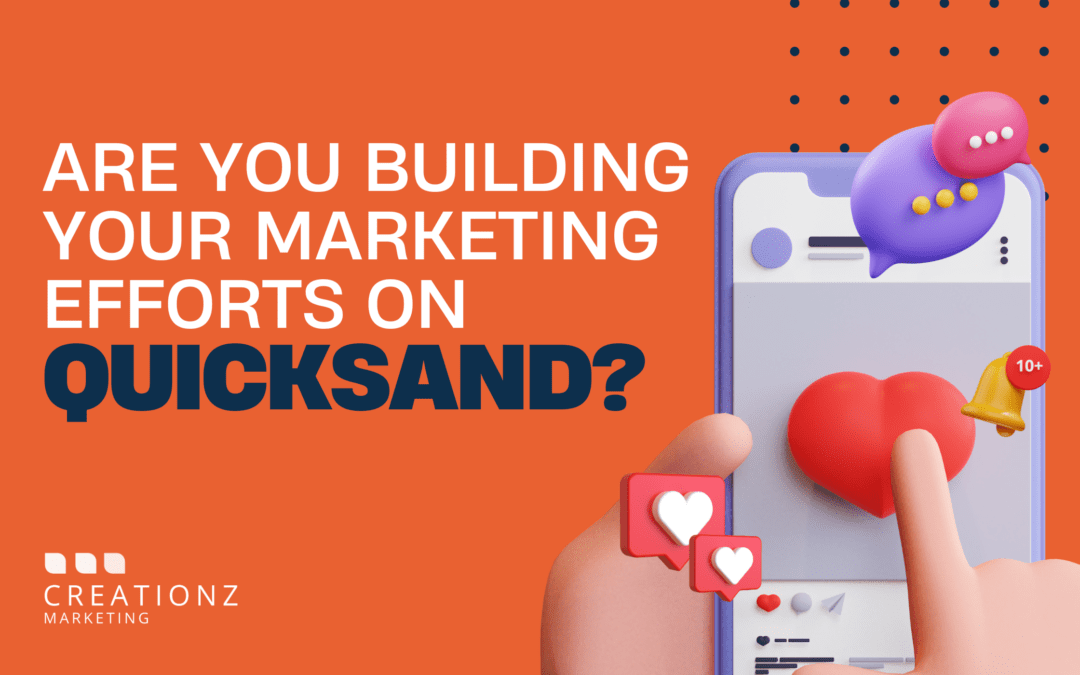Recently, the Department for Education (DfE) found itself at the centre of a social media storm - not for fixing the childcare crisis, but for how it tried (and failed) to say sorry. Instead of a sincere apology for ongoing concerns around early years funding,...

Marketing Planning 2025: How to Build a Strategy That Delivers Results
As 2024 comes to a close, now is the perfect time to set your sights on the opportunities ahead. A new year brings the promise of fresh starts, but without a marketing plan in place, it’s all too easy to lose momentum and waste valuable time and resources.
Marketing planning isn’t just about setting goals—it’s about creating a roadmap to help you navigate your journey effectively. A well-thought-out plan ensures you focus your energy on the right activities, allocate your budget efficiently, and communicate with your audience consistently.
At Creationz Marketing, we believe that every business deserves the tools and support to market effectively. That’s why we’re here to share why marketing planning is essential and how you can make 2025 your best year yet.

Why Is Marketing Planning So Important?
Marketing planning is the cornerstone of success for any business. It’s what transforms vague ideas into actionable steps and ensures your efforts are purposeful and results-driven. Without a plan, you risk spreading your resources too thin, jumping from one activity to the next without clear direction.
A solid marketing plan helps you:
- Align your marketing activities with your overall business goals, ensuring every action supports your long-term vision.
- Maintain consistent messaging across all platforms, which is crucial for building trust and recognition with your audience.
- Track your results, identify what’s working, and adapt your strategy to stay competitive in an ever-changing market.
- Save time and resources by focusing on activities that drive results, rather than wasting energy on ineffective efforts.
Think of marketing planning as the foundation of your business’s growth. With a clear roadmap, you’ll be able to move confidently toward your goals, knowing your efforts are targeted and impactful.
How to Start Planning Your Marketing for 2025
Getting started with marketing planning can feel overwhelming, but it doesn’t have to be. Follow these simple steps to lay the groundwork for a successful year ahead:
1. Reflect on 2024
Before you plan for the future, take time to look back. What worked well this year? What didn’t? Did certain campaigns perform better than others? Did specific platforms drive more engagement? Reflecting on the past gives you valuable insights to shape your strategy for the future. Don’t let yourself get stuck on this stage, download our marketing audit to start your planning on the right foot.
2. Define Your Goals
What do you want to achieve in 2025? Whether it’s increasing brand awareness, generating leads, or boosting sales, setting specific, measurable goals gives your plan a clear direction.
3. Know Your Audience
Understanding who you’re speaking to is essential. What are their pain points? What motivates them? What platforms do they use? Tailoring your marketing to your audience ensures your messaging resonates and drives action.
4. Allocate Your Budget
Decide how much you’re willing to spend and where to invest it. From social media advertising to email campaigns, ensure your resources are allocated to the activities that align with your goals and deliver the best return on investment.
5. Create a Content Calendar
A content calendar is your best friend when it comes to staying organised. Plan your content around key dates, seasonal trends, and industry events. This ensures your messaging is timely, relevant, and consistent throughout the year. Need help? We offer content planning support that is tailored to your business. Arrange a discovery call with us to find out more.
The Benefits of a Well-Planned Marketing Strategy
When you have a marketing plan in place, the benefits are endless:
- Consistent Growth: Stay focused on your objectives and avoid wasting time on activities that don’t move the needle.
- Stronger Brand Identity: Consistent messaging across all platforms helps build trust and recognition with your audience.
- Adaptability: In a rapidly changing marketplace, having a plan allows you to pivot quickly and stay competitive.
- Efficient Use of Resources: A clear plan eliminates guesswork, saving you time, money, and energy.


New to Marketing? Meet the Marketing Mentor Hub
Starting a career in marketing or taking on new responsibilities can feel overwhelming, but you don’t have to do it alone. That’s where our Marketing Mentor Hub comes in.
Designed for recent graduates, career changers, apprentices, or anyone returning to work after a break, the Mentor Hub is a supportive community that provides resources, training, and guidance to help you build confidence in your role.
Inside the Mentor Hub, you’ll find:
- Practical tools and guides to help you master the basics.
- A community of like-minded marketers to share advice and support.
- Access to regular Q&A sessions and expert advice to keep you on track.
It’s everything you need to kickstart your marketing career or refine your skills—all in one place.
Final Thoughts: Make 2025 Your Best Year Yet
Don’t let 2025 sneak up on you without a plan in place. Taking the time to develop a clear marketing roadmap now will set your business up for growth, efficiency, and success in the year ahead.
Ready to take your marketing to the next level? Let Creationz Marketing guide you every step of the way.










